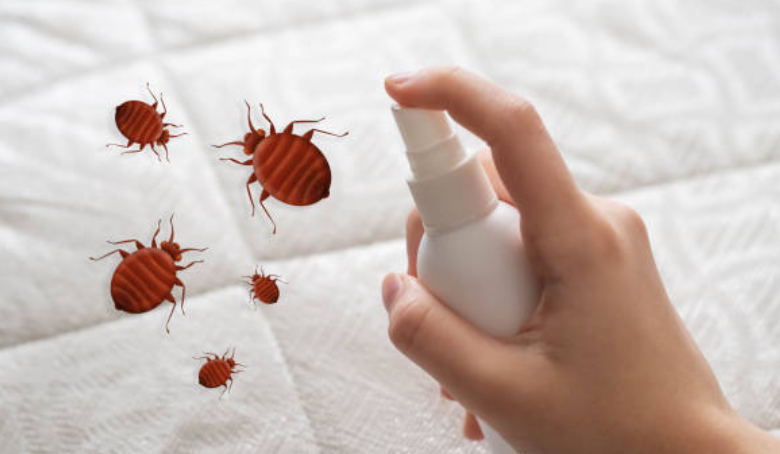What Happens to Your Body During a Bed Bug Bite

Bed bugs are tiny, blood-sucking insects that can cause a surprising amount of discomfort for their size. While they are not known to transmit diseases, their bites can trigger a wide range of physical and psychological reactions. Understanding what happens to your body during a bed bug bite helps you recognize the problem quickly and take steps to manage it effectively. This article explores the biological responses, possible allergic reactions, and common bed bug symptoms ( væggelus symptomer ) associated with a bite.
The Bed Bug Bite Process
Bed bugs typically feed on human blood during the night. These nocturnal pests are attracted to body heat and carbon dioxide, which leads them to their hosts. Once they find a suitable area of exposed skin, they insert two hollow tubes through the skin. One tube injects an anticoagulant and anesthetic, preventing the blood from clotting and dulling the pain so the host does not notice the bite. The second tube is used to draw blood.
Each feeding session lasts between 5 to 10 minutes. Most people do not wake up or feel anything at the moment of the bite due to the numbing agents bed bugs inject. However, the body’s reaction begins shortly afterward.
The Immune System Response
After the initial bite, your immune system quickly responds to the foreign substances left behind by the bed bug. The saliva contains proteins that your body recognizes as invaders, prompting an immune reaction. White blood cells rush to the site to combat these invaders, releasing histamines in the process.
Histamine release causes blood vessels to dilate and skin to swell, which leads to the characteristic red, itchy welts associated with bed bug bites. This reaction is very similar to what happens with mosquito bites, though bed bug symptoms can often last longer and appear in a more clustered pattern.
Visible Skin Reactions
One of the most common bed bug symptoms is the appearance of small, red bumps or welts on the skin. These often occur in lines or clusters, as bed bugs tend to bite multiple times in close proximity. The bites usually appear on areas of the body that are exposed during sleep, such as the face, neck, arms, and legs.
The itching from these bites can be intense, and scratching may lead to further complications such as secondary skin infections. In some cases, individuals may develop blisters or hives as a result of a more severe allergic reaction.
See also: Upgrade Your Home with a Stylish and Functional Fitted Kitchen
Allergic Reactions to Bed Bug Bites
While many people have only mild symptoms, others may experience allergic reactions that vary in severity. Mild reactions may include increased redness, swelling, and itchiness. More severe allergic responses, though rare, can include:
- Severe swelling
- Painful inflammation
- Burning sensations
- Anaphylaxis (in extreme cases)
If you experience difficulty breathing, dizziness, or swelling of the throat or tongue after a bed bug bite, it is crucial to seek immediate medical attention.
Delayed Reaction and Individual Sensitivity
Not everyone reacts to bed bug bites in the same way. Some individuals may have delayed reactions, with bed bug symptoms not appearing until several hours or even days after the bite. This makes it challenging to identify the source of the bites immediately.
Interestingly, some people may not react at all. Studies suggest that about 30% of people show no physical signs of being bitten, especially older adults. This can make it harder to detect an infestation early, allowing the problem to grow unnoticed.
Psychological Effects
Beyond the physical symptoms, bed bug bites can also have psychological effects. Many individuals report heightened anxiety, stress, and insomnia due to the fear of being bitten at night. In severe cases, people may develop delusional parasitosis, a psychological condition where they believe they are being infested with bugs even when none are present.
The psychological toll can be especially severe in cases of recurring infestations or when bites persist over a long period without successful treatment.
Risk of Secondary Infections
Bed bug bites are not inherently dangerous, but repeated scratching can break the skin and introduce bacteria. This increases the risk of developing a secondary infection, such as:
- Impetigo
- Cellulitis
- Lymphangitis
Signs of infection include increased pain, pus, redness spreading from the bite site, and fever. If you notice any of these symptoms, it’s essential to consult a healthcare professional for treatment.
Differentiating Bed Bug Bites from Other Insect Bites
It’s easy to confuse bed bug bites with those of mosquitoes, fleas, or mites. However, bed bug symptoms often have some unique characteristics:
- Bites usually occur in a line or cluster.
- They are more common on exposed skin.
- There is often a delay between the bite and the appearance of symptoms.
- The bites can persist for several days or even weeks.
To accurately identify bed bug bites, it’s important to consider your environment. If you notice these symptoms after staying in a hotel, using secondhand furniture, or after a recent travel, it may point to bed bugs as the cause.
Diagnosing and Confirming an Infestation
Identifying a bed bug infestation involves more than just recognizing bed bug symptoms. Physical signs of infestation include:
- Small blood stains on sheets or pillowcases
- Dark or rusty spots of bed bug excrement on mattresses and walls
- Bed bug shells or shed skins
- Live bed bugs, typically hiding in mattress seams, headboards, or furniture cracks
If you suspect bed bugs, it’s important to act quickly. Bed bugs reproduce rapidly, and a small problem can turn into a large infestation within weeks.
Treatment and Relief
There is no specific medical treatment required for bed bug bites, as they usually resolve on their own. However, symptom relief can be achieved with:
- Over-the-counter antihistamines for itching
- Hydrocortisone creams or calamine lotion
- Cool compresses to reduce swelling
- Avoiding scratching to prevent infection
If bites become infected or symptoms persist, a doctor may prescribe antibiotics or stronger topical treatments.
Prevention Tips
Preventing bed bug bites begins with preventing infestations. Here are a few effective tips:
- Inspect hotel rooms before settling in.
- Wash and dry clothes on high heat after travel.
- Regularly vacuum and clean bedding.
- Use mattress encasements to trap and detect bed bugs early.
If an infestation is confirmed, professional extermination is usually necessary.
Final Thoughts
While bed bug bites are not life-threatening, they can cause considerable physical discomfort and emotional distress. By understanding what happens to your body during a bed bug bite and recognizing common bed bug symptoms, you can take swift action to treat bites and prevent infestations from taking hold. Early detection, prompt response, and thorough cleaning are key to staying bite-free and healthy




